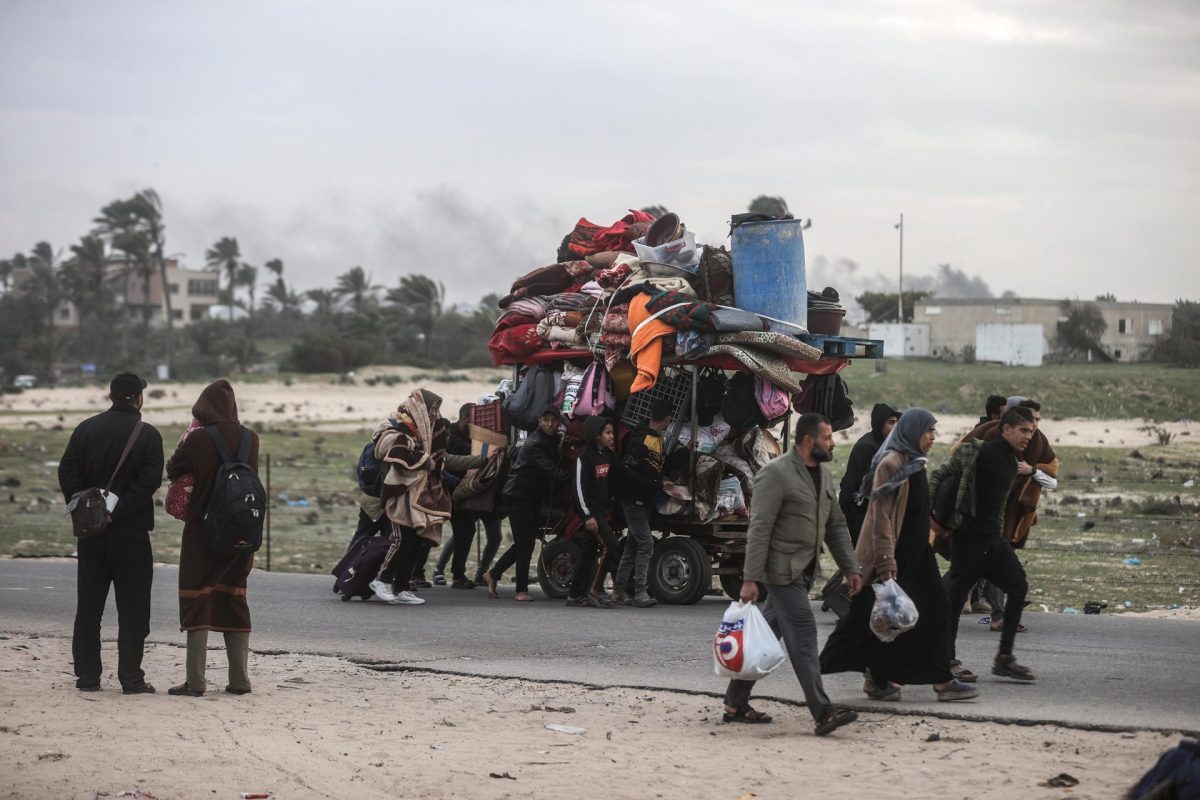The supposed measures have been part of Israel’s defence against charges of genocide levelled against it by South Africa at the ICJ for its conduct during its war on Gaza.
Forensic Architecture, which is based at London’s Goldsmith’s University, also suggested in its report, published on Wednesday, that what Israel characterises as humanitarian evacuations of Gaza residents may amount to their forced displacement, itself a war crime.
The research group has previously won recognition for its multi-disciplinary open-source research on conflict and state violence. It has presented evidence to the United Nations Security Council, the International Criminal Court and the European Court of Human Rights, among others.
In its defence against charges of genocide at the ICJ on January 12, Israel cited the existence of its Civilian Harm Mitigation Unit as evidence of the efforts its military made to avoid civilian casualties.
Among other items, lawyers representing Israel pointed to the efforts of the Unit to provide advance notice to civilians in targeted areas, including leafleting, radio broadcasts, and telephone calls, as well as providing maps detailing corridors to places it designated as safe.
Israel’s claims, as well as gaining significant traction in the international media, have also been a mainstay of its justification for its continued military campaign against Gaza.
But according to the study, Israel’s “evacuation orders” have “produced mass displacement and forced transfer, and contributed to the killings of civilians throughout Gaza”.
Since the war began in October, approximately two million Palestinians in Gaza have been displaced from the north to the south. Of these, the report notes, an overwhelming body of research, including its own, “documented Palestinian civilians being bombed, shot at, executed, arrested, tortured, treated in a degrading manner, and forcibly disappeared by the Israeli military along roads, corridors and zones declared ‘safe’”.
The outcome, Forensic Architecture noted, has been the deaths of more than 30,000 people in Gaza, more than 70 percent of whom are women and children, with thousands more missing, and tens of thousands more wounded.
The damage inflicted upon the population has been exacerbated by what the report called the “unparallelled and catastrophic levels of infrastructural destruction and agricultural damage, and the systematic targeting of vital civilian structures, including hospitals, schools, religious and cultural heritage sites, bakeries, and homes”.
Rather than serve as humanitarian measures intended to protect life, the study alleged that Israel’s evacuation orders have facilitated “displacement, fatalities, and genocidal acts” against Palestinians in Gaza.
Poor mapping, referred to within the report as “cartographic terror”, has also served to sow confusion and panic among Gaza’s displaced due to incorrect and vague instructions.
Forensic Architecture said that information provided by Israel to Palestinians in Gaza, ostensibly to provide them with access to safe zones, has been confusing, “resulting in cases of targeting and military bombardment of routes and zones designated as ‘safe’ by the Israeli military”.
Moreover, the report noted, the evacuation orders have often facilitated the movement of displaced civilians to areas of active Israeli military operations which, in numerous cases, has resulted in significant civilian fatalities.
Among the examples detailed are the January attacks on Khan Younis, Rafah and al-Mawasi, all of which had previously been deemed safe. The attacks resulted in numerous casualties, including children.
Under international law, civilians evacuated from conflict zones have to be provided with appropriate care during their displacement, with humanitarian chiefs noting in November that any safe zone must have “the essentials for survival, including food, water, shelter, hygiene, health assistance, and safety”.
However, the study said that since the conflict began on October 7, Israel has failed to provide protection for the displaced population, depriving “them of access to adequate food and water, humanitarian assistance, fuel, shelter, clothes, hygiene, sanitation, and medical care”, contravening the January ruling by the ICJ stipulating the acts Israel must undertake to avoid a potential conviction for genocide.
In other instances, large numbers of civilians were “knowingly” directed to areas that had been subjected to an evacuation order less than 24 hours previously and had since become unlivable.
Concerns were also raised about the arbitrary manner in which the Israeli military chose to redefine the status of civilians who were unable to leave the locations specified by the army’s evacuation orders.
One leaflet cited within the report warned civilians that “whoever chooses not to leave north Gaza to the south of Wadi Gaza [the stream bisecting the strip] might be identified as an accomplice in a terrorist organisation”, an injunction the authors note was in place throughout the campaign and effectively served to redefine Palestinian civilians unable to evacuate the region as potential combatants.
